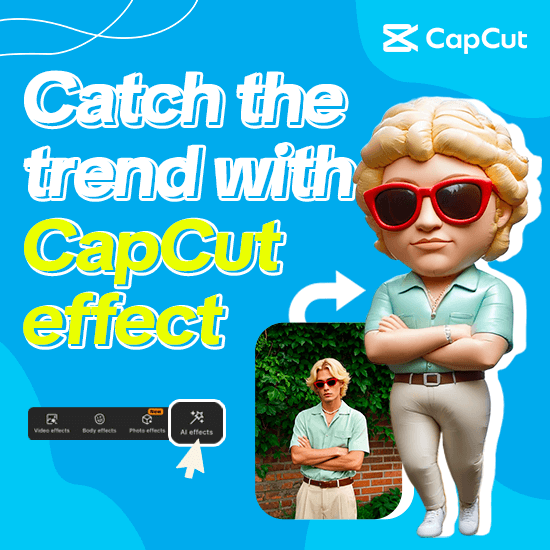Have you ever noticed how most videos on your phone look different these days? Instead of turning your phone sideways to watch, you can just hold it normally and the video fills the whole screen. That’s because vertical videos are taking over social media! From Instagram to TikTok, this format is becoming the new normal.
Vertical videos are designed to match how we naturally use our phones. When you’re scrolling through your feed, you’re probably holding your phone upright, right? Well, vertical videos fit perfectly in that position, giving you a full-screen experience without those annoying black bars on the sides. It makes watching content so much more enjoyable and immersive.
Whether you’re a content creator, a small business owner, or just someone who loves sharing moments with friends, understanding vertical videos can really help your content stand out. In this guide, we’ll explore everything about vertical format videos, why they work so well, and how you can create amazing vertical content yourself – completely free!
What Exactly is Vertical Format?
So what do we mean when we talk about vertical format? Basically, it’s videos that are taller than they are wide. If you hold your phone normally without rotating it, that’s the vertical position. Videos made specifically for this orientation are what we call vertical videos.
This format is brilliant because it matches our natural phone-holding behavior. Think about it – when you’re checking social media, you’re almost always holding your phone upright. Vertical videos take advantage of this by filling your entire screen, making the viewing experience much more engaging.
Social media platforms absolutely love vertical content. Instagram Stories, TikTok, Snapchat, and YouTube Shorts are all built around this format. They’ve noticed that people prefer not to rotate their phones while watching videos, so they encourage creators to go vertical.
There’s something more personal about vertical videos too. Since they occupy the entire screen, it feels like the person in the video is right there with you. This intimacy is why vlogs, tutorials, and even advertisements work so well in vertical format.
Understanding Vertical Aspect Ratios
You might have heard the term “aspect ratio” before. It sounds technical, but it’s actually pretty simple. Aspect ratio just describes the relationship between a video’s width and height. For vertical videos, the height is always greater than the width.
The most common vertical aspect ratio is 9:16. This means for every 9 units of width, the height measures 16 units. Don’t worry if math isn’t your thing – just remember that 9:16 is the gold standard for most social media platforms. You’ll see this ratio on Instagram Stories, TikTok videos, and YouTube Shorts.
Another popular option is the 4:5 aspect ratio. This one isn’t quite as tall as 9:16, but it’s still very much vertical. You’ll often spot this ratio in Instagram feed posts. It’s great for photos and videos that you want to display in portrait mode without appearing too narrow.
Why does aspect ratio matter so much? Using the wrong aspect ratio can lead to awkward cropping or those dreaded black bars on the sides. This can make your content look unprofessional and less engaging. By choosing the correct vertical aspect ratio, you ensure your videos look perfect on mobile devices.
Most Common Vertical Video Sizes
Now that we understand aspect ratios, let’s talk about actual pixel dimensions. Depending on where you plan to share your content, you might need different video sizes.
Here are the five most common vertical video sizes you should know:
1080×1920 pixels represents Full HD quality. This is the most frequently used size for vertical videos and works beautifully across nearly all platforms.
720×1280 pixels offers HD quality. This is an excellent choice if you’re looking to save storage space or if your internet connection isn’t the fastest.
1080×1350 pixels is specifically perfect for Instagram feed posts. This size maintains the 4:5 aspect ratio that Instagram recommends for regular posts.
1080×1440 pixels is ideal for Instagram Stories. It’s slightly taller than the feed size, ensuring perfect fit on the Stories screen.
1080×2340 pixels is designed for newer smartphones with higher resolution displays. This size makes your videos look incredibly sharp and clear.
Selecting the appropriate size is crucial because it ensures your video appears correctly on various devices. If you’re ever uncertain which size to use, 1080×1920 is a reliable choice for most situations.
Why Vertical Videos Dominate Social Media
There are numerous advantages to using vertical videos on social media platforms. Let’s explore some of the biggest benefits.
First and foremost, vertical videos provide a superior mobile experience. Since most people access social media through their phones, vertical videos fit the screen perfectly. Viewers don’t need to rotate their devices, and the content feels natural to watch. This significantly increases the likelihood that people will watch your video all the way through.
For businesses, vertical videos can dramatically improve customer satisfaction. Using this format demonstrates that you value your audience’s viewing experience. People appreciate content that’s easy to consume, and they’re more likely to develop positive associations with your brand.
Vertical videos typically achieve higher engagement rates. They’re more effective at capturing attention and maintaining viewer interest. On platforms like TikTok, vertical videos tend to receive more views and likes simply because they’re designed for that specific format.
Social media platforms themselves are built around vertical content. Instagram, TikTok, and others prioritize vertical videos in their algorithms. This means your vertical content is more likely to be shown to more people.
Finally, consistent use of vertical videos can significantly boost brand recognition. When you regularly post vertical content, people begin to recognize your distinctive style. This helps you stand out and build a stronger brand identity.
CapCut — Your all-in-one video & photo editing powerhouse! Experience AI auto-editing, realistic effects, a huge template library, and AI audio transformation. Easily create professional masterpieces and social media viral hits. Available on Desktop, Web, and Mobile App.
Creating Vertical Videos for Free
Creating vertical videos doesn’t need to be difficult or expensive. There are plenty of free tools available that can help you produce fantastic content. Here are three excellent ways to create vertical videos without spending a dime.
Using CapCut Desktop Video Editor
CapCut is an outstanding tool for creating vertical videos. It’s incredibly user-friendly and packed with features that simplify the editing process. Whether you’re new to video editing or have some experience, CapCut can help you create professional-looking videos.
One of CapCut’s best features is its easy aspect ratio adjustment. You can set your video to 9:16 or any other vertical aspect ratio with just a few clicks. If you’ve ever wondered how to change format on CapCut, you’ll find it’s remarkably straightforward.
The “Auto reframe” feature automatically adjusts your video to fit vertical format. This is perfect when you have horizontal footage that you want to convert to vertical. The tool intelligently crops and resizes your video to look great in portrait mode.
Another fantastic feature is the ability to add backgrounds. If your video doesn’t fill the entire screen, you can add blur effects or solid colors to the background. This gives your video a polished, complete appearance.
CapCut supports numerous file types, allowing you to import almost any video or image. After editing, you can export your video in high quality and share it directly to social media platforms.
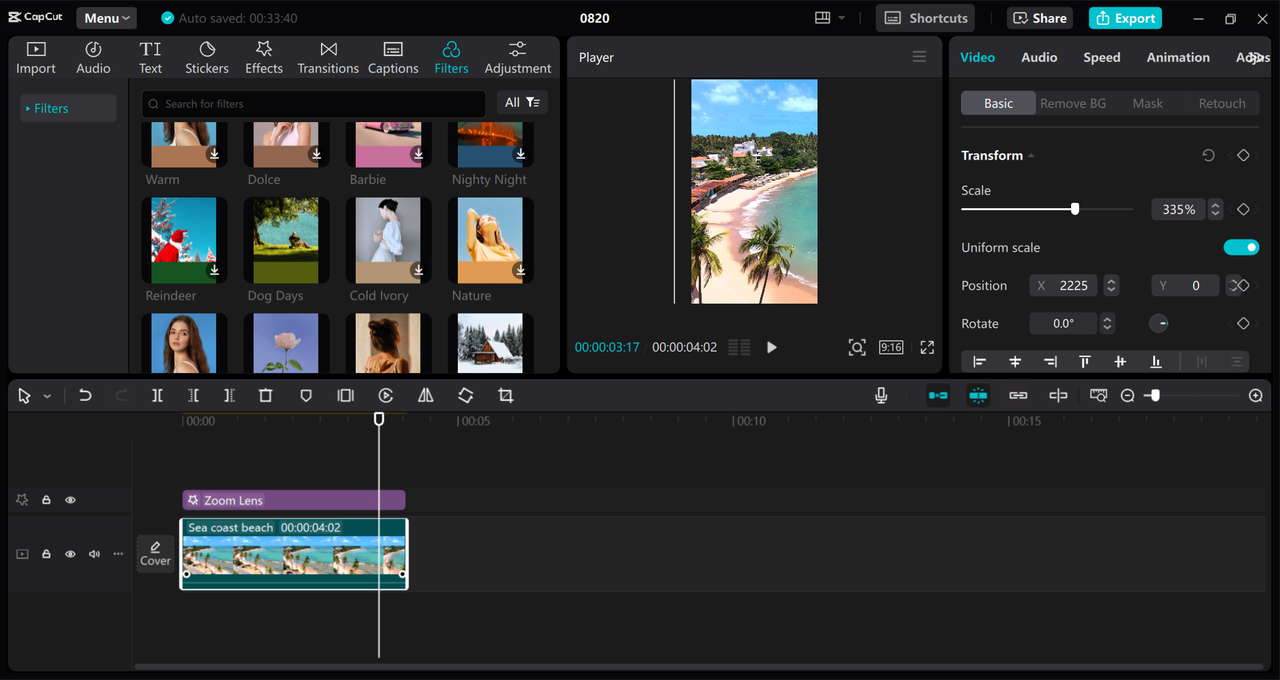
Creating Vertical Videos with CapCut
If you want to create a vertical video with CapCut, here’s a simple step-by-step guide:
First, download and install CapCut on your computer. The software is completely free, so you don’t need to worry about any costs.
Once you open CapCut, click on “New Project.” Then, import the video you want to edit by dragging and dropping your file into the project panel.
Now comes the crucial part – changing the aspect ratio. Navigate to the “Ratio” option and select 9:16. This will convert your video to vertical format. You can also use the “Auto reframe” tool to let CapCut handle the adjustments automatically.
After setting the ratio, you can edit your video as needed. Trim clips, add music, include text – whatever your project requires. When you’re satisfied with your creation, click “Export.” Choose your preferred quality settings, select a file name and save location, and you’re done! You can even share directly to TikTok or YouTube from within CapCut.
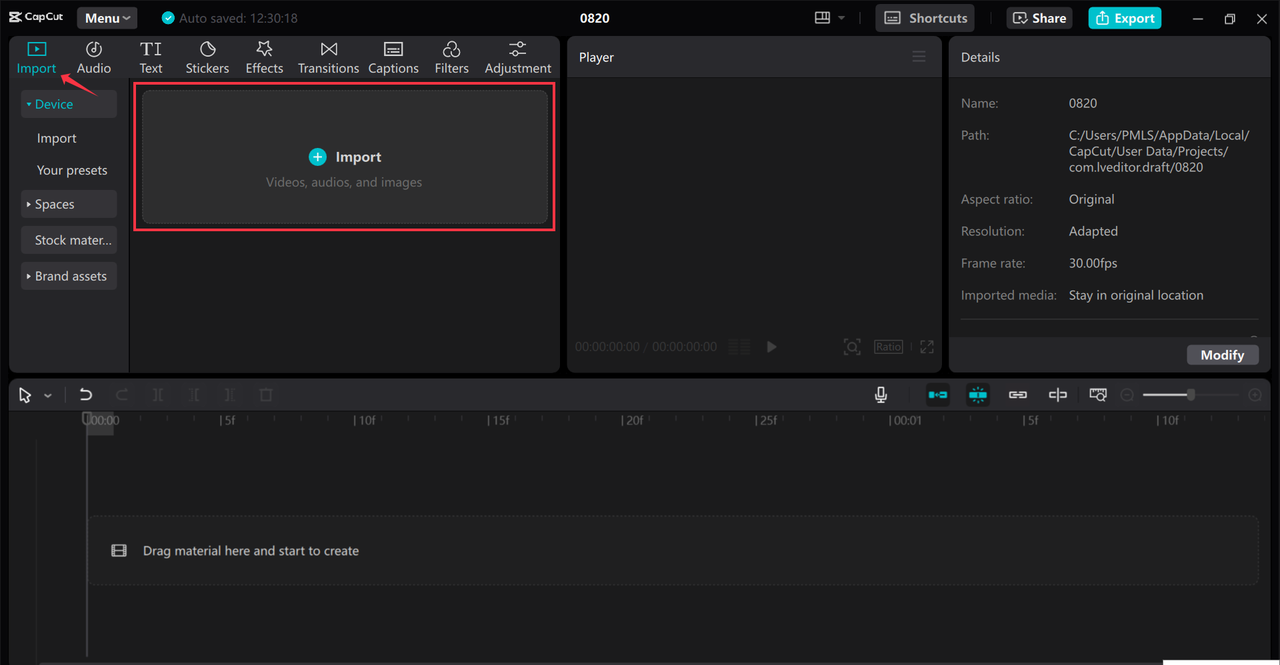
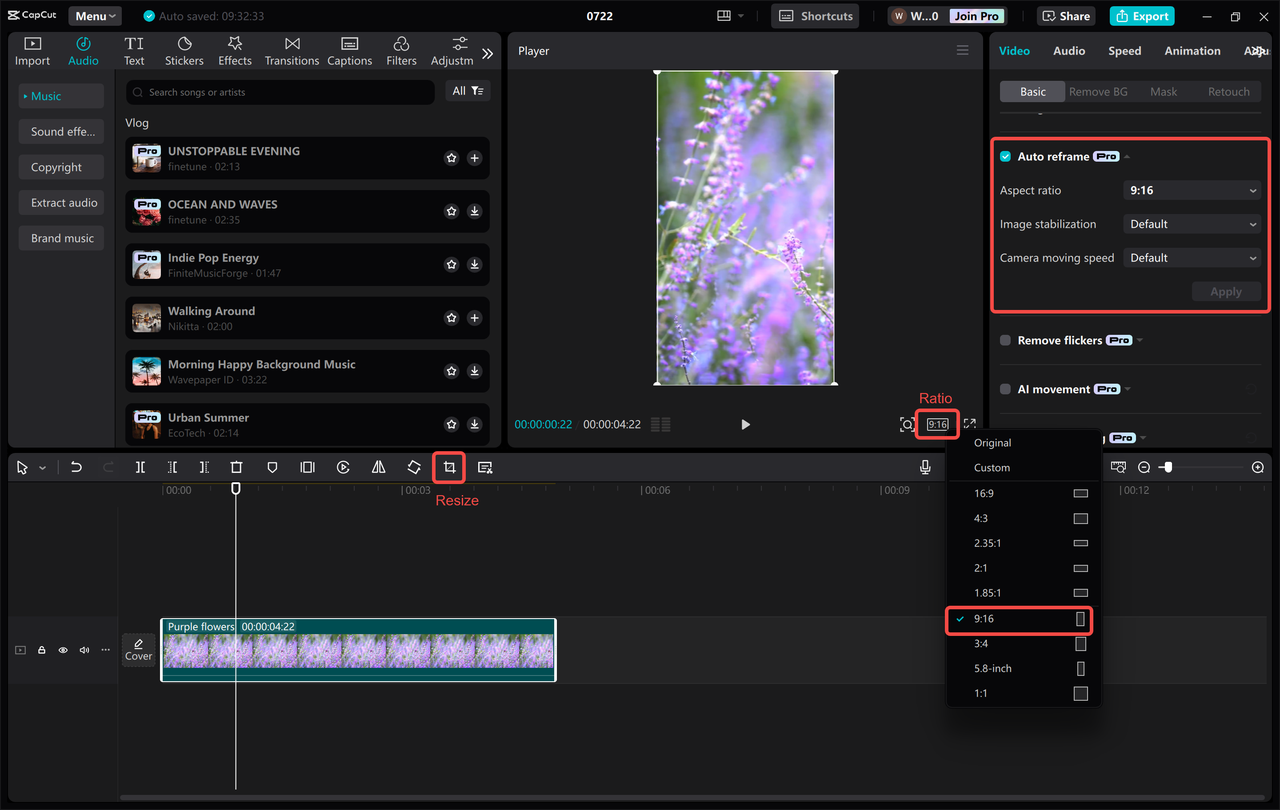
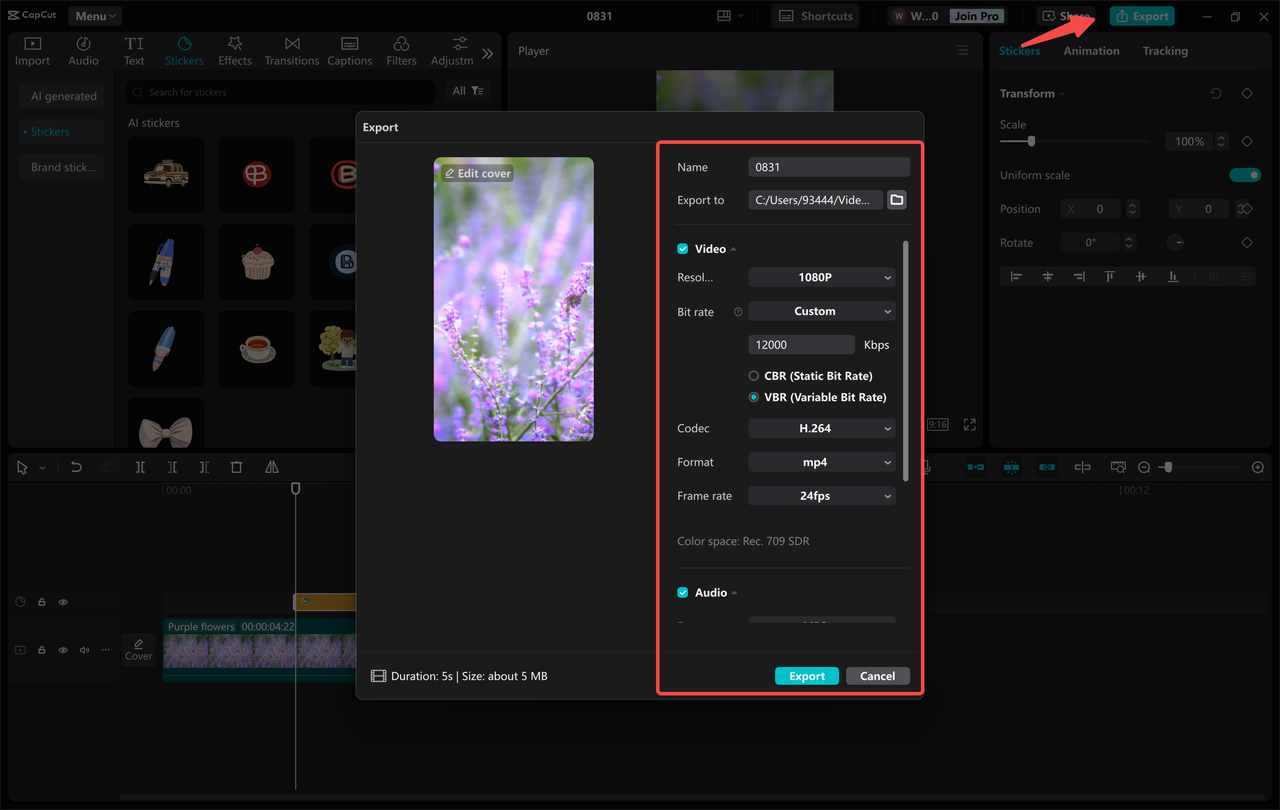
Advanced CapCut Features
CapCut includes an advanced feature called “Long video to shorts” that’s perfect for converting lengthy videos into shorter vertical clips.
To use this feature, open CapCut and locate the “Long video to shorts” option on the main screen. Upload your video, then set the duration for each short clip. You can let CapCut automatically select the best segments, or manually choose them yourself.
Once processed, CapCut will generate multiple vertical shorts from your original video. You can then export each clip and share them across social media platforms. This is an excellent way to repurpose content and maintain audience engagement.
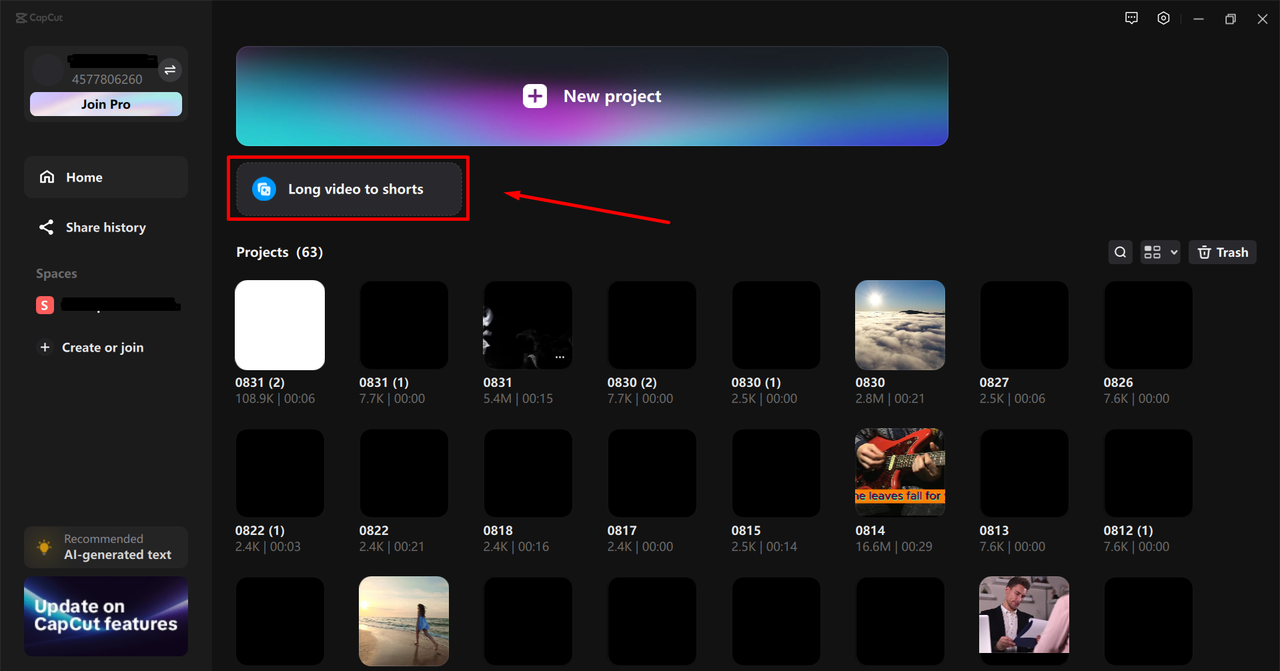

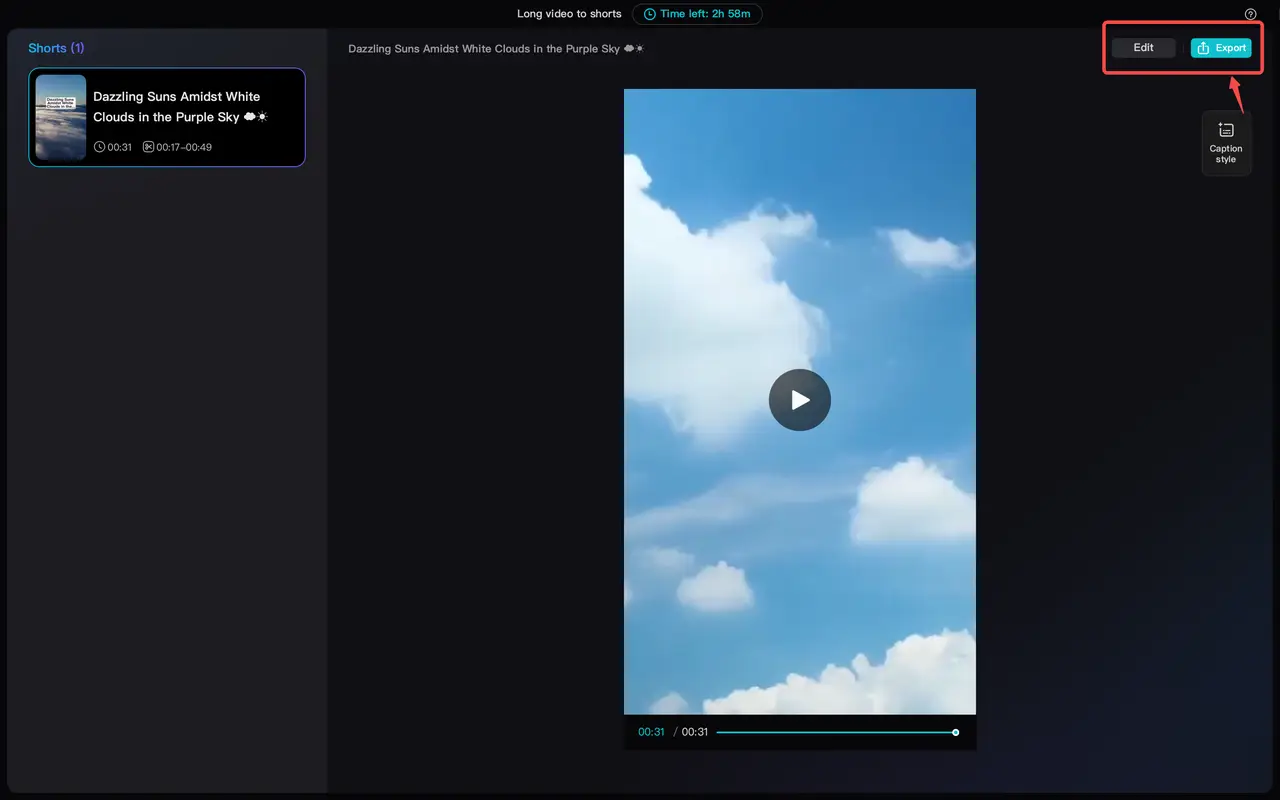
Using Typito
Typito is another free tool for creating vertical videos. It’s an online video maker known for its simplicity and ease of use. There’s nothing to download – just visit their website and start creating.
With Typito, you can select your vertical video format before beginning your project. They offer various templates for different video types, so you don’t need to start from scratch. This is particularly helpful if you’re unsure about design elements.
Typito provides access to a library of royalty-free images, videos, and music. You can incorporate these assets into your projects without worrying about copyright issues. Once editing is complete, you can export your video and share it on social media.
The main limitations are Typito’s editing options, which are more limited compared to CapCut, and export times can be longer. However, if you’re looking for a straightforward online tool, Typito is a solid choice.
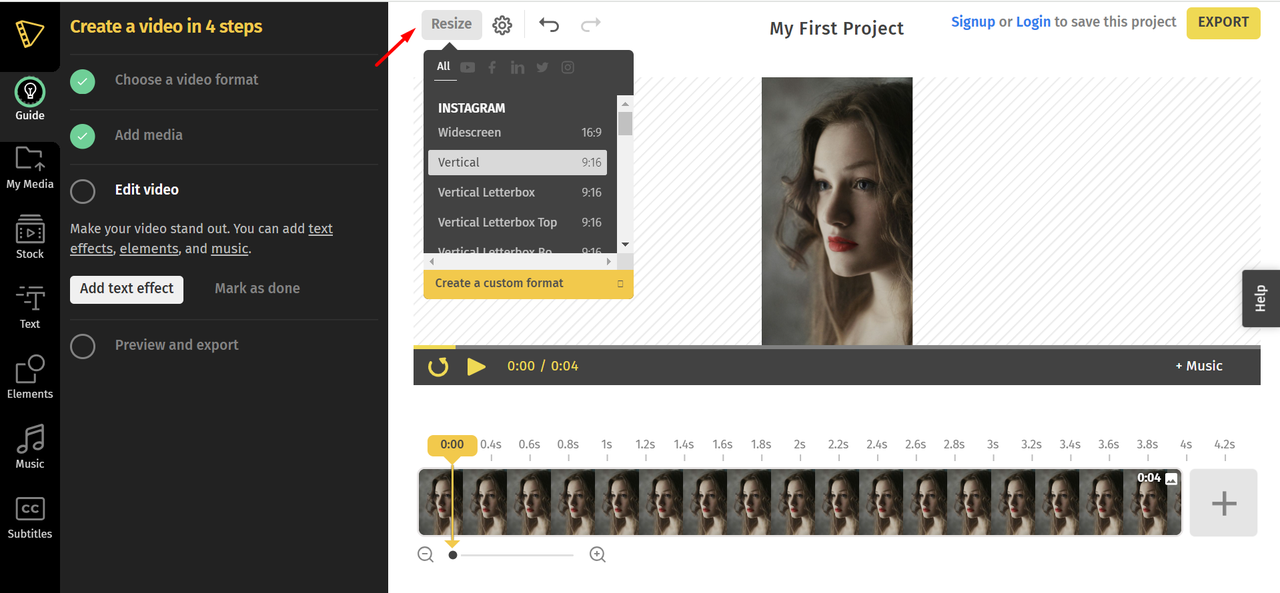
Using InVideo AI
InVideo AI utilizes artificial intelligence to assist with video creation. It’s another online tool that requires no software downloads.
One remarkable feature of InVideo AI is its ability to generate video ideas. Simply describe what you want, and it will suggest visuals and even write scripts. This can save tremendous time if you’re struggling with creative direction.
InVideo AI automatically adjusts aspect ratios for vertical videos. When creating content for TikTok or Instagram, it will set the appropriate size automatically. You can also convert articles into videos, which is incredibly useful for bloggers looking to repurpose content.
The tool supports over 50 languages, making it accessible to creators worldwide. The main drawback is that you cannot upload your own voice recordings, which might limit some users.
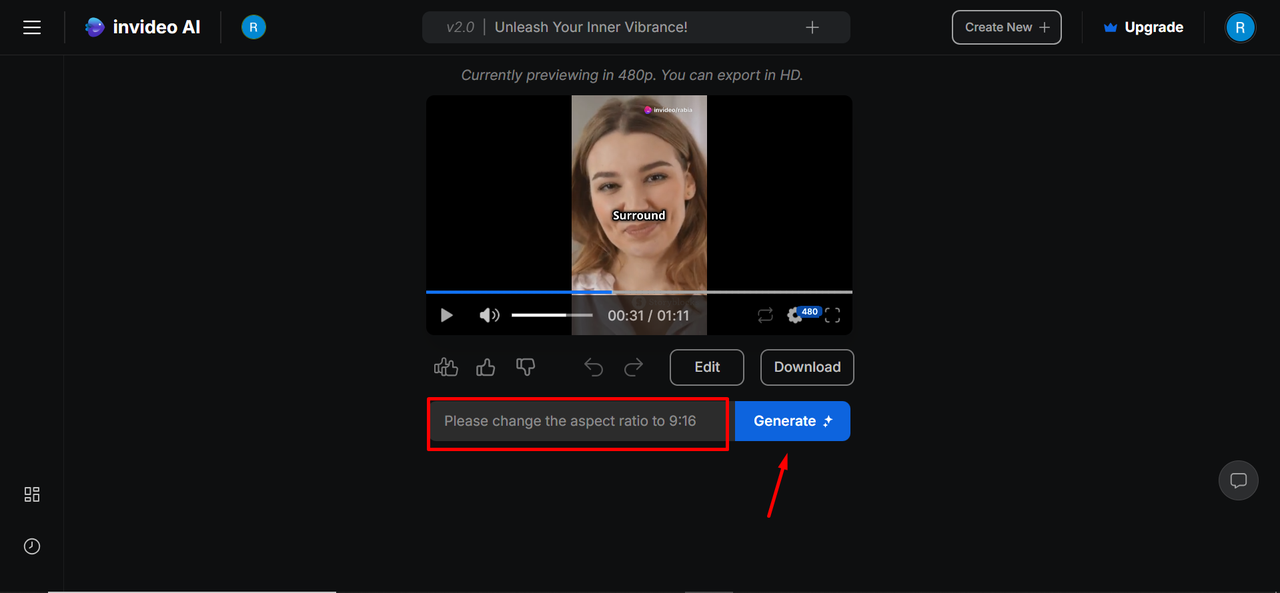
CapCut — Your all-in-one video & photo editing powerhouse! Experience AI auto-editing, realistic effects, a huge template library, and AI audio transformation. Easily create professional masterpieces and social media viral hits. Available on Desktop, Web, and Mobile App.
Where Vertical Videos Shine
Vertical videos aren’t limited to social media, though that’s where they’re most prevalent. Here are some common applications for vertical video content.
Social media stories represent a major use case. Platforms like Instagram, Snapchat, and Facebook have stories specifically designed for vertical videos. These are brief, engaging videos that disappear after 24 hours, perfect for sharing behind-the-scenes content or quick updates.
Reels and shorts have become incredibly popular. Instagram Reels and YouTube Shorts are both optimized for vertical videos. Typically lasting between 15-60 seconds, they’re excellent for entertainment or educational content.
Live streaming has embraced vertical format as well. More people are streaming directly from their phones, and vertical videos enhance the viewer experience by eliminating the need to rotate devices while creating a more personal connection.
Vlogging benefits tremendously from vertical format. Vertical vlogs feel more intimate because they fill the screen completely, creating the illusion that the vlogger is speaking directly to you.
Advertising and promotions achieve excellent results in vertical format. Since vertical videos naturally capture attention, they’re ideal for promotional content. Brands frequently use them to showcase products on social media platforms.
Tutorials and demonstrations work wonderfully in vertical format. When teaching something, vertical videos provide a clear, focused view of the subject matter. This is particularly effective for mobile-focused activities like app demonstrations.
Final Thoughts
Vertical videos are undoubtedly here to stay. They’re perfectly suited for mobile devices and significantly enhance the social media viewing experience. Whether you’re a content creator or business owner, incorporating vertical videos can help you reach broader audiences and maintain their engagement.
If you’re ready to start creating vertical videos, we highly recommend trying CapCut. It’s free, user-friendly, and contains all the features necessary to produce professional-quality videos. With CapCut, you can easily adjust aspect ratios, crop videos, and even convert longer content into short vertical clips.
So what’s holding you back? Begin creating your own stunning vertical videos today!
Frequently Asked Questions
What dimensions does a 1080 vertical video have?
A 1080 vertical video typically measures 1080 pixels in width and 1920 pixels in height. This represents full HD quality and is the most common size for vertical videos. If you need to create or edit videos in this size, CapCut is an excellent tool for the job.
Can I convert a video to vertical format?
Absolutely! You can change a video’s format from horizontal to vertical using editing software. CapCut simplifies this process by making it easy to adjust aspect ratios and crop your video for optimal vertical presentation.
Which aspect ratio works best for vertical videos?
The 9:16 aspect ratio is ideal for vertical videos. This ratio perfectly fits most mobile screens and has become the standard for platforms like TikTok and Instagram. If you’re using CapCut, you can set your project to 9:16 with just a few simple clicks.
Some images courtesy of CapCut
 TOOL HUNTER
TOOL HUNTER

